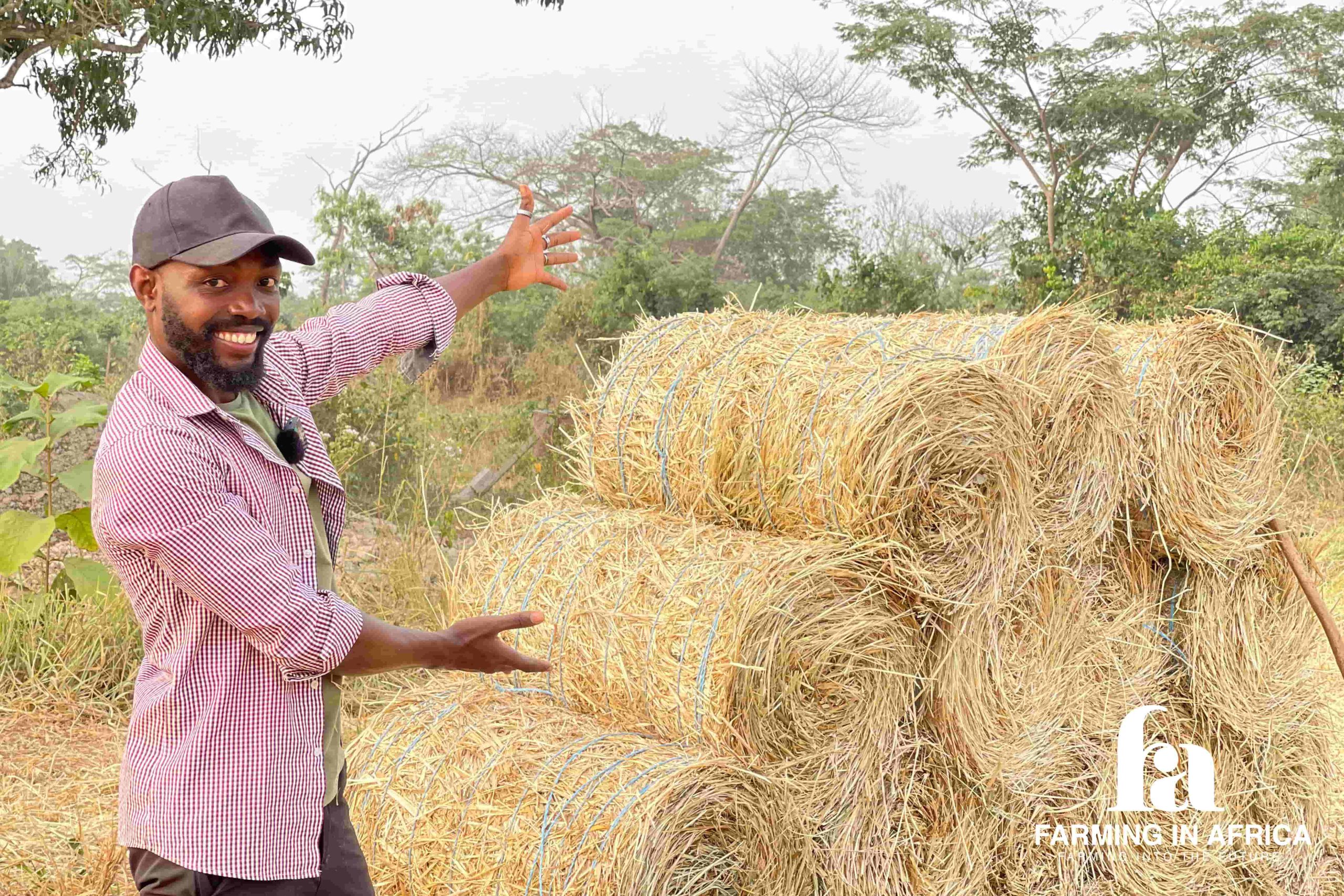“You can’t raise healthy animals on empty stomachs — and you can’t build food systems on broken feed systems.”
As Africa confronts deepening food insecurity and climate-driven agricultural strain, a quiet but powerful solution is emerging—locally produced hay. At the heart of this shift is Ghana’s own Semanhyia Grass, cultivated and scaled by Farming in Africa (FIA).
Feed: The Overlooked Crisis in Livestock Farming
Across Ghana and West Africa, livestock farmers—from smallholders to large-scale ranchers—face an ongoing battle: accessing reliable, affordable, high-quality feed. The dry season worsens the problem. Imported feed prices surge, hay becomes scarce, and animals suffer. Malnutrition, weight loss, and mortality lead to lower productivity and a cycle of poverty.
Livestock feed makes up to 70% of production costs, yet most countries lack national feed policies. Without homegrown feed systems, farmers remain vulnerable to price shocks and supply gaps, unable to scale or even survive.
FIA’s Response: Semanhyia Grass as a Scalable Solution
At FIA, feed security is viewed as foundational. With Semanhyia Grass hay, Ghana now has its first commercial-grade, locally produced hay—designed to meet both market demand and ecological realities.
More than a product, it’s a strategy. Semanhyia Grass empowers farmers to:
- Cut reliance on imports
- Improve livestock health
- Avoid seasonal feed gaps
- Run resilient, profitable farms
“When feed is secure, families can prioritize education and growth instead of survival,” notes FIA’s team.
Climate-Smart, Farmer-First
Semanhyia Grass thrives under dry and erratic climate conditions—a vital trait as climate change intensifies. Locally produced hay:
- Requires less transport (lower emissions, lower costs)
- Supports soil health via rotational farming
- Enables off-season feeding
- Helps stabilize meat and dairy supply during droughts
Feed resilience, FIA argues, is climate resilience.
Beyond the Bale: A National Model
FIA is building not just hay, but an ecosystem—from seed to bale to storage. The goal is to make local feed solutions scalable and policy-relevant. A national strategy could involve:
- Government-supported feed reserves
- Forage R&D with universities
- Youth-led hay enterprises
- Regional exports of Ghanaian hay
Already, exports to Nigeria and beyond are showing that Ghana can lead in livestock sustainability.
Hay as Green Gold
Hay isn’t a byproduct—it’s a strategic asset. FIA’s investment in Semanhyia Grass reflects a deeper commitment: to help African farmers build feed-secure, climate-smart, economically strong communities.
“Feed is where food begins,” says FIA. “And when our animals eat well, our people thrive.”
Join the Movement
FIA is calling on:
- Governments to integrate feed into ag policy
- Development partners to fund local feed systems
- Universities to innovate in forage genetics
- Media to highlight livestock’s role
- Young Africans to see hay as green gold—not just grass
Farming in Africa believes the future of food starts not in supermarkets—but on the grazing fields of Suhum, Berekum, and Tamale. One bale at a time, we’re feeding the future.
